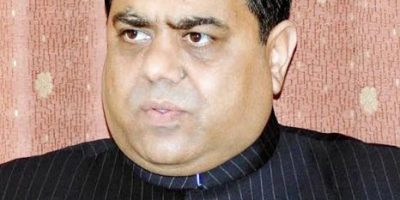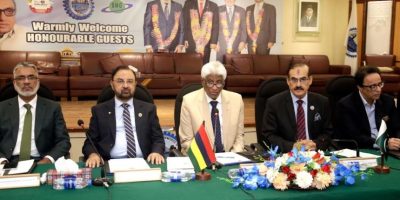Pakistan needs to watch out as CPEC-related debt soars

MANILA, MAY 05 (DNA) – Pakistan has made progress, which is evident from its completion of the International Monetary Fund’s (IMF) bailout programme, but challenges remain as the country maneuvers its way through worrying economic indicators and depleting foreign exchange reserves.
At the 51st Annual Meeting of the Board of Governors, Asian Development Bank (ADB) President Takehiko Nakao acknowledged Pakistan has progressed. But he also had words of caution for the over $300-billion economy.
“I have visited Pakistan two times, and there has been progress,” Takehiko said during the meeting.
The remarks make sense since GDP growth will hit a 12-year high at the end of the current fiscal year, according to official figures. From 4.1% in fiscal year 2014, GDP growth has surged to 5.8%. The PML-N may have missed its target but an improvement has been made.
However, there are always two sides to a story and the other one is not too pretty.
Firstly, the growth has come on the back of massive debt, pointing to the need for sustainable returns if the trajectory is to remain positive.
Pakistan’s total debt has surged to Rs22.8 trillion as of December 2017, owing to loans under the China-Pakistan Economic Corridor (CPEC), borrowings to maintain foreign reserves and infrastructure, and floating Euro and Sukuk bonds.
Few weeks ago, at a Belt and Road conference in Beijing, IMF Managing Director Christine Lagarde stated that the Belt and Road Initiative (BRI) can provide infrastructure financing to countries, but it should not be considered “a free lunch”.
She expressed concerns over the increase in global debt due to BRI, which would pose balance of payment challenges.
This particularly holds true for countries that already have a debt problem including Pakistan. What began as an investment project of $46 billion has now grown to $62 billion. This means that over the next 30 years the country will be repaying billions of dollars. The IMF has already expressed apprehensions and cautioned the government of adverse implications.
Speaking on the issue, Nakao said that connectivity is important and the ADB is willing to cooperate but at the same time, economic reality and feasibility should be considered.
“If we invest in borrowed money then we need economic return. If countries borrow too much without assessing economic viability it would cause issues in repayment.
“I agree with Christine Lagarde’s concern. Owing to the presence of ideas like BRI, we should consider debt sustainability issues thoroughly,” he stressed.
Talking about the country’s role in the global project, Nakao said that cooperation between Pakistan and China remains strong and if connectivity in the region is improving the business climate, then it is a positive factor.
The president also subtly mentioned the trade war between the US and China. “We are concerned about the disputes between some countries. If trade is interrupted it would damage Asian economies along with other nations.”
Nakao said that trade in Asia had surged in 2017 compared to the previous year, partly due to higher prices of resources, rise of commodity trade and stronger growth in developed economies, including the US.
Touching briefly on the energy crisis, the ADB chief stressed that there was a great need to address the six to eight-hour daily power outages that plague many regions in Pakistan. He revealed that it was discussed with Finance Minister Miftah Ismail in Washington a few weeks ago.
He emphasised the need of a stronger policy, adding that he is aware of the upcoming elections and is watching the developments closely. “If it is possible, we are ready to provide policy-based lending or budget support in coming months.”
Related News

Pakistan’s economic independence depends on FBR independence
ISLAMABAD, MAY 14 /DNA/ – Murtaza Mughal, President of Pakistan Economy Watch (PEW), said onRead More

High Commissioner urges business community to have duty free access to entire Africa via Mauritius
DNA KARACHI: High Commissioner of Mauritius Rasidally Soobadar has urged the business community of KarachiRead More


Comments are Closed